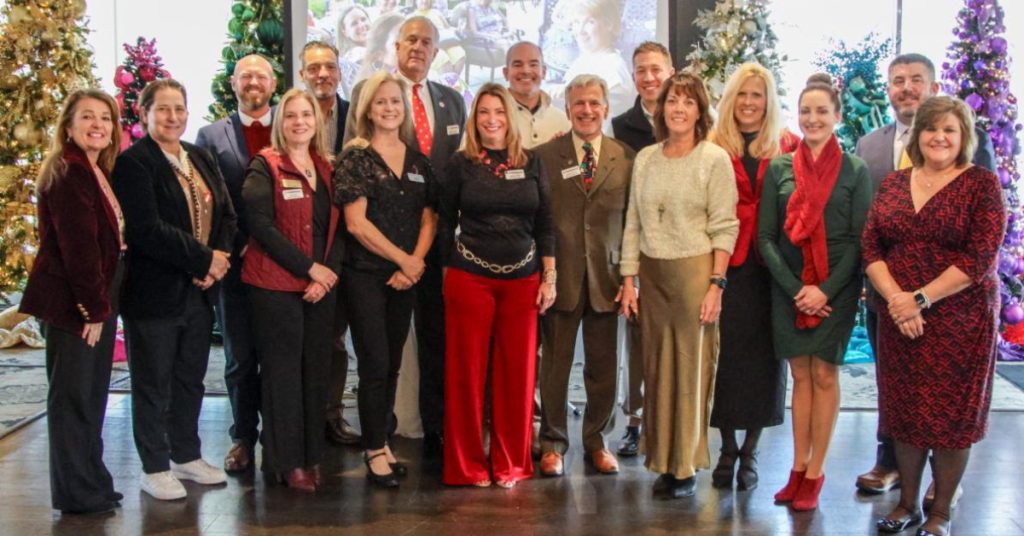Indiana's deepwater port at Burns Harbor on Lake Michigan stokes the state's economy to the tune of $14 billion a year and provides more than 104,000 direct and indirect jobs. It's a key component of Northwest Indiana's economic engine – and it could all disappear on Jan. 1, 2012, if an environmental provision put in place by the New York Department of Environmental Conservation (NYDEC) is enforced.
Indiana's not alone either. The provision governing the discharge of ballast water from commercial vessels also affects ports in Pennsylvania, Ohio, Michigan, Illinois, Wisconsin and Minnesota, along with ports in the Canadian provinces of Quebec and Ontario.
In less than a year, the Great Lakes shipping industry could find itself permanently anchored if the NYDEC provision isn't reversed.
Activity in November shows the impact of St. Lawrence Seaway shipping. Cargo was up 28 percent to 4.8 million metric tons over last year. Year-to-day shipments from March 31 through November were 35 million metric tons, up 19 percent from last year.
According to the American Great Lakes Ports Association, Burns Harbor is seeing more ships than ever before, many of them loaded with components for wind turbine farms being built in Indiana. There also have been big increases in the tonnage of coal, grain and steel moving through Burns Harbor.
And it's not just shipping and port jobs, either. The industries and businesses that rely on waterborne shipping to receive raw materials and products from around the world wouldn't be able to get them unless the products were unloaded at East Coast or Gulf Coast ports. And that means those raw materials and products would have to be shipped hundreds of miles by train or truck, adding to the cost of doing business.
Shipping via the Great Lakes is cheaper because one ship can haul the same amount of cargo as 3,000 trucks, according to the American Great Lakes Ports Association. “Shipping is a bigger economic engine than people realize,” says Kay Nelson, director of environmental affairs for the Northwest Indiana Forum. She describes New York's provision as “more stringent than any technology can assess.” And, says Nelson, it doesn't allow other Great Lakes states time to bench test new technology in order to comply with the regulations.
“When this was first brought to my attention I thought it was so incomprehensible that people had gotten their facts and figures confused,” says Nelson. “As I understand, it was very intentional. It was well intended to protect the quality of the Great Lakes, but it is so much more stringent than current technology and the timetable for compliance does not allow time for technology to catch up.”
Steven Fisher, executive director of the American Great Lakes Ports Association, agrees. He explains that when oceangoing freighters (called “salties”) using the St. Lawrence Seaway are not fully loaded, they take on ballast water to maintain their stability.
The problem is that water taken on in the Mediterranean and then discharged in Lake Michigan may contain aquatic organisms that may be harmful in their new environment. It is suspected that's how zebra mussels, native to the Black Sea in Russia, wound up in the Great Lakes.
Fisher says the shipping industry admits it plays a role in the transfer of aquatic organisms and is working to eliminate the problem. In fact, every vessel entering the St. Lawrence Seaway is required to pump out its ballast tanks while at sea and flush the empty tanks with salt water, which kills freshwater organisms.
The American Great Lakes Ports Association, says Fisher, supports rules that would require oceangoing vessels to install environmental technology to clean ballast water to standards established by the International Maritime Organization in 2004. The IMO is an arm of the United Nations responsible for international shipping policies.
U.S. and Canadian inspectors test every foreign ship entering the Great Lakes system in Montreal, says Fisher. “This is a global problem,” says Fisher. “An international treaty was put in place to control the situation by 2016. We've been preparing for that.”
But in October 2008, Fisher says, New York decided to implement a tougher law that would take effect in 2012. And since every ship that enters the Great Lakes must pass through New York waters, the provision not only affects ships calling on ports in New York, but also ships merely passing through New York for Canada and ports in other states.
“New York's provisions are 100 times more stringent than the international treaty,” says Fisher. “No such technology exists to comply with the provisions.”
Global Water Technologies of Indianapolis, however, is working on a possible solution, according to CEO Erik Hromadka. The company provides non-chemical water treatment for recirculating water in cooling towers, a technology that could be adapted for ships.
“There is a growing interest in new ways to treat water without the addition of chemicals,” says Hromadka. “Abundant water is a great resource in this region and gives us an economic advantage, so we must find ways to preserve and protect it.”
Hromadka says one approach is to partner with other companies and to conduct tests on ballast water. “Our idea is to provide recirculating, non-chemical treatment for ballast water that can take place while ships are enroute and allows that process to be repeated until the appropriate level of treatment is reached. The goal is to develop a system that will help to protect the Great Lakes economy and also have an Indiana solution that can be exported to other parts of the world.”
In 2011, Hromadka says, technology for the process will be tested at Purdue University and a pilot system will be installed on a ship operating in the Great Lakes.
But there isn't a lot of time. Already the Canadian government has sent a strongly worded letter of protest to the U.S. State Department. Fisher says the seven U.S. states affected by the provision haven't yet crafted a protest. Thus far, the states have deferred to the American Great Lakes Ports Association, which has challenged the provision in New York state courts. The association has lost at every level, including the Court of Appeals of the State of New York (the state's highest court), which rejected the challenge on June 15.
The provisions were challenged because from the time the new regulations were proposed until the time they were passed by NYDEC was just three weeks. One of the challenges was that New York law requires “a thoughtful process,” something Fisher says doesn't appear to have taken place in less than a month.
While other ports could file suit in federal court, Fisher says that's an option for later. For now, he is trying to negotiate a solution by working with the incoming governments in each of the Great Lakes states. Except for Indiana, all seven other Great Lakes states elected a new governor, and Fisher says he's spending his time educating the new administrations on the situation.
Fisher says some have asked if ships not docking in New York could simply ignore the provision and sail on to another state. “Shippers are not allowed to knowingly operate in violation of the law,” says Fisher. “Insurers contain language in their policies that if shippers knowingly violate the law, they could lose their coverage, and in the shipping business, that could be fatal.”
Fisher explains that the provisions passed in New York are the result of efforts by environmental groups to clean up the water in the Great Lakes. “Environmental groups had been lobbying in all the states to pass stricter ballast regulations, but finally someone looked at a map and realized they didn't need to do that. All they needed to do was get something passed in New York,” says Fisher. “That would effectively stop shipping to all the Great Lakes.” New York law allows NYDEC to act independently on water regulations. The rules were passed without input from either the General Assembly or the governor's office, something Fisher hopes will change in 2011 when a new governor and legislature take office.
“This affects New York ports, too,” says Fisher. “They stand to lose as much as anyone else.”
Jody Peacock, assistant commissioner of the Port of Indiana, says the state is taking “a wait and see” approach for now. “New York has indicated it will grant some waivers for shippers, but we don't know what that means. If waivers are granted, we need to see what they are.”
Peacock says he has been working closely with Fisher on the issue. “We have no insight whatsoever into what motivated people in New York to do what they did,” says Peacock. “Everyone agrees we need strong standards in controlling aquatic species.”
Peacock says it is an issue that ought to be addressed by the federal government, but no one yet has been able to agree on how clean is clean. “Not all species introduced in the Great Lakes have been bad,” Peacock says, adding that popular sport fishing species such as walleye, trout and salmon are not native to the Great Lakes. “Still, we wonder how one state can stop the flow of commerce to seven states and Canada,” says Peacock.
Fisher points out that over the years, 182 non-native species have taken up residence in the Great Lakes and most of them are not attributed to shipping. He said 97 species were discovered before ocean ships entered the Great Lakes in 1959.
Nineteen of the species were deliberately stocked for sport fishing, 40 of them are from North America and 14 have no known origin. Fisher says 55 of the invasive species are plants.
“A new non-indigenous species has not been discovered since 2006,” says Fisher. “The perspective of the shipping industry is that one new invasive species is too many.”


